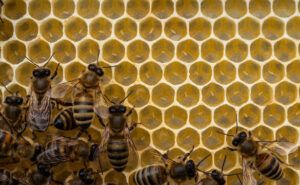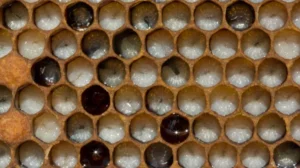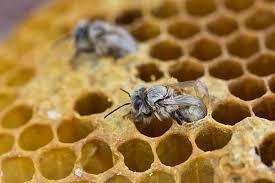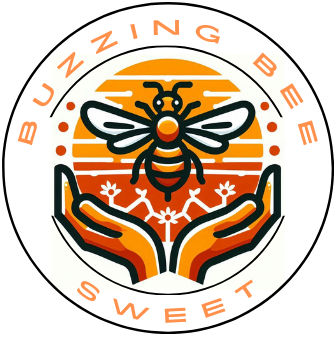Honey bees actively pollinate plants, sustaining greenery and blooming gardens, and their role extends far beyond just making honey. By understanding their lifecycle, we can deepen our appreciation for these hardworking insects and their essential contributions to our world.
To begin, several species of honey bees exist, but the Western honey bee, or Apis mellifera, stands out. This species serves as the primary nectar collector across diverse ecosystems, playing a vital role in global biodiversity. Its fascinating lifecycle unfolds in distinct stages, each crucial for the hive’s survival and broader ecological balance.
Each stage of a honey bee’s lifecycle provides insights valuable for gardeners, farmers, and ecological conservationists alike. Bees don’t just produce honey; they also pollinate crops, directly supporting global food supplies and maintaining ecosystem stability. Without bees, crops would yield less, leading to widespread consequences for food availability and biodiversity.
The honey bee’s lifecycle tells a story of transformation and ecological importance. The process begins with the queen laying tiny eggs that develop into diligent adult bees. Each stage, from egg to adult, ensures the hive’s survival and contributes to the balance of surrounding ecosystems.
Through this framework of growth and duty, honey bees actively support both their hive and the larger ecological community. Learning about these stages helps us see why conserving bee populations is essential for protecting biodiversity and food security.
As we explore their lifecycle, let’s connect their roles to the bigger picture of our survival and the planet’s health. Understanding these incredible insects reveals why every bee matters and why protecting them should be a shared responsibility.
Egg Stage: The Beginning of Life

The first chapter in a honey bee’s life begins when the queen bee delicately lays her eggs. Imagine this: one extraordinary queen, responsible for populating the entire hive, with the ability to lay up to 2,000 eggs per day during peak season.
Each egg, no bigger than a pinhead, is placed with care into a hexagonal cell prepared by worker bees. Here the journey begins, and the hive holds its breath as these eggs represent the future of the colony, set to hatch in just three days.
The queen plays a decisive role, determining the future role of the bee—worker, queen, or drone—by the fertilization of the egg. Fertilized eggs develop into workers or potential queens, while unfertilized ones become drones, the male bees of the colony.
For those nurtured as future queens, special attention is given with royal jelly, a substance secreted by worker bees, that determines their regal path. It’s a fascinating selection process showing remarkable hive intelligence.
Temperature and humidity maintain the conditions crucial for egg development. Worker bees vigilantly manage these factors, knowing any imbalance might jeopardize the eggs. It’s incredible how such tiny creatures perform such critical tasks with precision and dedication.
Seeing this egg stage as the hive’s potential reminds us of the delicate balance in nature. Each egg’s safe development is a testament to the hive’s cooperative spirit and strategic planning.
Understanding the egg stage highlights the challenges every bee must overcome from the start, setting the tone for their incredible journey. Awareness of this natural process can deepen our resolve to protect these vital creatures at every stage of their lives.
Larva Stage: Growth and Development

After hatching from the egg, a honey bee enters the larva stage, embarking on a period of rapid growth.
Picture this tiny creature as a voracious eater, consuming food nonstop to prepare for its next transformation. Worker bees bring it a potent mix of royal jelly, honey, and pollen, catering to the specific needs of each larva.
During this stage, which lasts about six days, larvae are fed around-the-clock by the ever-diligent nurse bees. This constant care ensures they’re packed with nutrients, essential for their development and for determining their future roles within the hive.
Interestingly, the diet not only nourishes but also decides the fate of the larvae. A consistent royal jelly diet for select few prompts the development of future queens.
The worker bees’ commitment to tending these larvae epitomizes the hive’s teamwork. It’s impressive to think that such coordination happens naturally without directives—all for the sake of the hive’s survival and prosperity.
The larva stage highlights a hive’s unity and the meticulous process of nurturing potential into productivity. It underscores the importance of every single bee knowing its role and fulfilling it with precision and care.
Acknowledging the intricacies of the larva stage can inspire a deeper appreciation for the natural world. This understanding fosters respect for bee populations, reinforcing why their preservation is vital for our ecological future.
Pupa Stage: Metamorphosis Unfolds
When bees reach the pupa stage, it’s like entering a secret world of transformation. Tucked away in their wax cells, larvae spin cocoons around themselves, and the real magic begins. It’s during this stage, lasting about 12 days, that the transformation from a legless creature to a fully formed bee occurs.
Inside these cocoons, the larvae morph significantly. Their bodies reorganize, developing legs, wings, eyes, and all the intricate features that define adult bees. It’s an astonishing biological makeover, driven by the hive’s unerring schedule and nature’s inherent design.
While the pupae are safely cocooned, the hive quietly waits, its members continuing their tireless work, knowing the future of the colony is growing behind wax walls. The hive’s temperature and humidity controls are adjusted to aid this crucial development. Every member plays a part in safeguarding these budding bees, showcasing their extraordinary teamwork and survival instincts.
Challenges abound in this vulnerable stage. Any disruption in environmental conditions or wax cell integrity can endanger the pupae. Yet, the colony’s well-choreographed systems usually ensure that most bees successfully complete their transformation.
Observing the pupa stage is a testament to nature’s prowess and elegance. Understanding this phase allows us to appreciate the complexity of bee development, emphasizing why every stage is crucial in the life of a bee and why supporting bee populations through habitat preservation is essential.
Adult Stage and End of Life: Completing the Cycle

When the adult bee emerges from its waxy confines, it embarks on a new chapter of bustling activity and purpose within the hive. This final stage of life is where bees fully engage with the roles they’ve been destined to play, whether as workers, drones, or queens.
Worker bees, the backbone of the hive, are the multitaskers. Their to-do list is long: they nurse the young, forage for nectar and pollen, maintain the cleanliness of the hive, and more. Their lifespan varies, often dependent on the season, ranging from a few weeks during the intense foraging season to several months if they emerge in the winter months. It’s a short yet impactful life, dedicated tirelessly to the hive’s success.
For drones, life is simpler but no less essential. Their main role is to mate with a queen, extending their genetic lineage. Once they’ve fulfilled their duty or as winter approaches, their presence is less tolerated by the hive, leading to their eventual exit.
Queen bees, central to the hive’s vitality, can live several years. Their enduring life largely revolves around one mission: laying eggs that maintain the hive’s population. Each bee plays a unique role in keeping the hive thriving, which reflects the extraordinary organization inherent in bee communities.
As bees reach the end of their lifecycle, their contribution to the hive doesn’t go unnoticed. They’ve laid the groundwork for the next generation, embodying a cycle of renewal that keeps the hive buzzing, literally.
Appreciating this final stage underscores the intricacy of nature’s cycles and the irreplaceable role bees play in our environment. Understanding the dedication and efficiency of these adult bees should encourage renewed efforts to protect and preserve their habitats, ensuring that these bustling insects can continue their essential work for generations to come.
This post may contain affiliate links.

What a fascinating look at the lifecycle of honey bees! 🐝 It’s incredible how each stage plays a vital role in the hive’s success. I especially love the part about how diet influences whether a larva becomes a queen or a worker bee—nature is so smart! 🌼 It’s a reminder of how interconnected everything is and why we need to protect these amazing creatures. Thanks for sharing this insightful post!
Hi Maksim!
Thank you for your comments!
Yes, I agree with you! Bees are truly one of the natures marvelous wonders!
That’s why it’s so fascinating being a beekeeper! 🙂
/Mats
This is a beautifully detailed post that really brings the lifecycle of bees to life! I appreciate how you’ve highlighted not just the stages, but the cooperative spirit within the hive at each step. The way you describe the queen’s role, the tireless work of the larvae-nurturing worker bees, and the metamorphosis during the pupa stage truly captures the complexity and dedication of these tiny creatures. It’s fascinating to think about how every part of the process, from the egg to the adult bee, is perfectly orchestrated to ensure the hive’s success.
Reading this post makes me realize just how much we rely on these insects, not only for honey but for the very survival of countless plant species. When I was growing up in the 60s, I can remember that honeybees were everywhere. If there was a field of clover or dandelions, bees were always present. I was always afraid to walk barefoot through a lawn because of the bees. Now, they are missing. Your blog serves as a great reminder of why it’s so important to support conservation efforts for bees. Thank you for sharing such an informative and engaging piece!
– Scott
Hi Scott!
Thank you for your comments!
Yes, I think it is important to understand about the life cycle of bees and how important they are to nature and also to us humans. Like you, I also grew up in the 60’s and have the same experience that at that time there were much more bees present everywhere.
/Mats